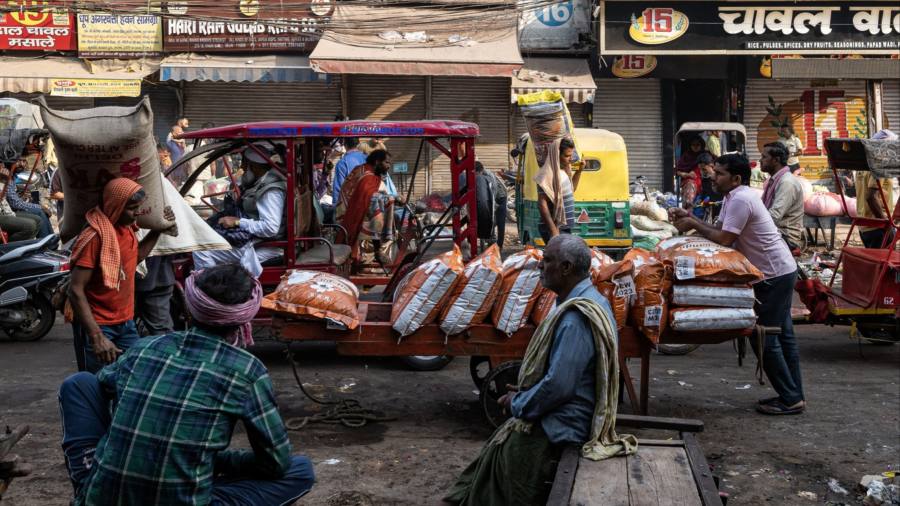Receive free Emerging markets updates
We’ll send you a myFT Daily Digest email rounding up the latest Emerging markets news every morning.
The writer is chair of Rockefeller International
“Resilience” is one of the buzzwords of the year. It’s used widely to describe the US economy, which continues to stave off recession and lift global growth, despite the sharpest interest rate hikes in decades. But there is a more surprising tale of fortitude unfolding in the developing world.
Among the 25 largest emerging economies, three-quarters of those reporting data have beaten growth forecasts this year, some, including India and Brazil, by a wide margin. Forecasts for global growth in 2023 are rising and most of that uplift is coming from emerging economies.
Few analysts saw this revival coming. They expected emerging economies to be especially vulnerable to rising rates and that perception still rules, based on the weaknesses of China, weighed down by its heavy debts, and of a few smaller countries such as Ghana or Bolivia. But this picture excludes big developing nations outside China, from India to Mexico, which account for half the emerging world by economic output and more than half by population.
True, rising interest rates did cause emerging world crises in the 1980s and 1990s, but many of the big emerging economies entered the pandemic of 2020 with repaired banking systems and heightened financial discipline. They borrowed less heavily for stimulus spending, and saw deficits rise on average by 15 per cent of gross domestic product from 2020 to 2022, half as much as the US. The old notion that “emerging” is another word for reckless no longer applies.
Now, it is the American story that rests on questionable foundations. The US stock market is rallying again thanks in part to the boom in artificial intelligence, which like all manias is likely to prove part hype. Meanwhile economic growth is kept alive by the billions of dollars in stimulus funds that still sit in US savings accounts, and by financial conditions that remain much looser than the Federal Reserve would like. Despite the scale of interest rate hikes so far, the Fed says there is more to come before inflation is under control.
By comparison, having moved earlier than the Fed to raise rates, central banks in the emerging world are closer to meeting their inflation targets — and cutting rates again. Normally inflation runs much hotter in emerging economies but, excluding outliers, the median rate is now running at 5 to 6 per cent — no higher than in developed economies. That has not happened in four decades. Some central banks in the developing world have started to cut rates and many others are likely to follow soon.
Emerging economies are on track to grow faster than 4 per cent on average over the coming year, or four times faster than developed ones. Though developing economies typically grow faster than developed ones, that gap shrunk last decade and is now widening again. And money follows growth: foreign investment in the big emerging markets is on the rise. Their currencies have been strengthening against the dollar since late last year.
While the fiscal deficit is on track to stay unusually high in the US through the 2020s, it is already headed down in most big emerging economies. As a result, the emerging world recovery could be more sustainable.
Yet commentators keep warning of looming crises in the emerging world, as if nothing has changed. Back in the 1980s and early 90s, there were never fewer than 25 emerging nations in default, and that often included major ones such as Brazil and Turkey. Today there are just five, all small ones like Belarus and Zambia.
Though the major emerging economies are generally in good financial shape, each has its own strengths. So far this year, much of Asia is rising on the back of strong domestic demand. In Latin America, the key driver is exports, particularly commodity exports, with prices holding up. Net exports are contributing 2 points to Latin American growth, and as much as 8 points in Chile — in part thanks to sales of metals used in electric vehicles.
They are also “decoupling” from China. Emerging economies used to grow in lockstep with China, their leading trade partner, but that link has weakened in recent years. As Beijing turned inward, developed countries sought to reduce their dependence on trade with China, creating opportunities for other emerging economies.
The developing world never fits neatly into one storyline. There are 155 emerging countries and if tightening financial conditions eventually does trigger a US recession, as many still expect, it will ripple outward and stir trouble in some of them. But to borrow that buzzword, their story so far is one of genuine “resilience”.
Read the full article here




